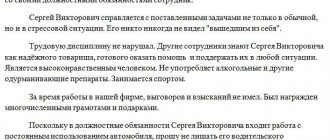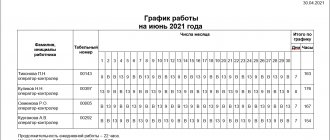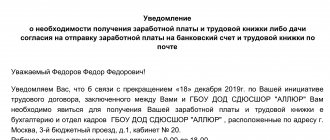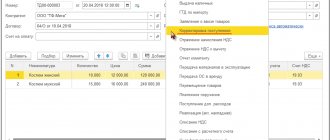Is the employer obliged to issue it?
Some believe that such paper is a relic of the past, but if the HR department or the management of the organization receives a written request for its provision, the employee cannot be refused. Taking into account Art. 62 of the Labor Code of the Russian Federation, such a document from the place of work is provided no later than three working days from the date of application. This norm applies not only to those subordinates who are currently registered with the company, but also to those with whom the employment relationship has already been terminated - a reference letter from their last place of work is issued for them (decision of the Moscow City Court dated 09/08/2011 in case No. 33-28750).
Not only the employee himself, but also government agencies have the right to request a recommendation. Why is it needed? Here is just a small list of situations when she is asked:
- when applying for a new position;
- when applying for a loan;
- when contacting the guardianship authorities;
- for submission to an educational institution;
- when being awarded a prize or state award;
- for the court.
Depending on the place where the document is addressed, the emphasis and formulation of the employee’s qualities are chosen.
Varieties
Recommendations are:
- external;
- internal;
- positive;
- negative.
External are those documents that are provided to other organizations or government bodies. When compiling them, it is necessary to clarify with the employee the purpose of the request - the style of writing and the form of presentation depend on this.
Internal characteristics are used, for example, when an employee is transferred to another department or division, for promotion within the organization where he works. Such a document necessarily places emphasis on the employee’s business qualities and work skills.
In some cases, a personnel specialist asks to prepare a document for the person being characterized, telling him in general terms how to write a reference for a person, and providing him with a sample. This is acceptable and even correct, especially if a new person works in the HR department who does not know his colleagues well, or the team is so large that it is difficult for the HR officer to evaluate the qualities of a particular person.
Please note that the employer is not obliged to agree on the text with the employee, even if it is not a positive reference for the employee that has been prepared, but a negative or neutral one. But if he does not agree with the content, he has the right to challenge the document in court.
General requirements
The current Russian legislation does not contain any template for drawing up such a document. But general rules still exist.
The paper is drawn up on the official letterhead of the organization. If this is not approved by the internal regulations of the enterprise, then the full details are indicated in the form, especially if it is officially required by any institution.
Let's take a closer look at how characteristics are drawn up for employees. They indicate:
- Personal data, which includes full name. persons, date of birth, marital status, data on military service and education, information on the availability of various awards.
- Information about the work. The section contains information about the length of service, the time of acceptance, personnel movements within the organization, information about the labor achievements and professional skills of the person. If during the course of work the employee was sent for training, advanced training, etc., then this is also worth mentioning. In addition, this section contains information about the employee’s various merits (gratitude, encouragement, etc.) or disciplinary sanctions.
- Personal qualities. This information is the most important. If the employee is the head of a department, then it is worth noting his organizational qualities, the presence or absence of responsibility for subordinates, the degree of readiness to make difficult decisions, his demandingness towards himself and his subordinates, and other qualities. If the employee is a performer, then you should indicate the degree of his readiness to carry out the instructions of the manager, initiative, desire for excellent results, etc. Also in this section it is necessary to disclose the relationship of the person with the work collective: does he enjoy authority and respect or the relationship in the team does not work out due to the difficult character or other characteristics of the employee.
Since this is an official document, it must be signed by the head of the organization. A signature and seal are required (if the company has one). It is important not to forget to put the date of compilation.
Another practical tip: try to fit all the information on one sheet.
How to write a job description correctly
This description must be compiled by an authorized representative of the administration of a higher educational institution. As a rule, it is prepared by the curator, signed by him, followed by the signature of the dean of the faculty, the rector and the seal of the university. When sending to practice, special emphasis should be placed on the student’s academic performance and academic achievements, discipline and ability to self-organize. If a student has achievements in scientific work, then this is also worth mentioning. Especially if the practice has much in common with the direction of the young talent’s scientific work.
We recommend reading: Additional Help Mortgage Loan Payments What Amount
As a rule, a character reference for an employee is prepared by his immediate supervisor. But if we are talking about a worker whose leader is the site foreman, then the description will, at best, be drawn up by the foreman. Typically, this responsibility will be assigned to the workshop manager. In this case, the concept of immediate supervisor is very relative. In the army, for example, a company commander is profiled by his immediate superior, the battalion commander. It is the head of the unit who has the right to compile a characteristic, be it a military, production, scientific, and so on unit. For a driver, the characteristics will be compiled by the head of the transport department, for a mechanic - by the chief mechanic, for an accountant - by the chief accountant, for the chief engineer - by the director of the enterprise, and so on. A character reference can only be drawn up by an official to whom the administration has delegated such powers and this is determined by the constituent documents or charter of the enterprise or organization.
What to write about
The main requirement for a document is objectivity. As a result, the general description should create an image of the person being characterized and help form the correct opinion about him.
The content varies depending on who the recommendation is being prepared for. If an employee intends to contact the guardianship authorities for the purpose of adoption, his personal qualities should be especially noted: for example, kindness, caring, good manners. If a worker is planning to advance up the career ladder or needs to find a job in a new place, such epithets as “executive”, “initiative”, “responsible” will come in handy. For the court, the details of how honest a person is, how he treats his responsibilities, and what kind of relationships he has with colleagues are important.
But there is another, pleasant, reason to prepare a letter of recommendation - the awarding of state awards of the Russian Federation. In this case, personnel specialists should be guided by the recommendations from the letter of the Presidential Administration of the Russian Federation No. AK-3560 dated April 4, 2012 and the Decree of the President of the Russian Federation No. 1099 dated September 7, 2010 “On measures to improve the state award system of the Russian Federation.” The letter contains methodological recommendations regarding the preparation of award documents. It, in particular, says that the information should help evaluate the contribution of the awardee; it is important to mention the qualifications, personal qualities, high merits of the employee, and an assessment of the effectiveness of his activities. It is prohibited to directly list job functions, track record or describe the life path of a specialist.
ConsultantPlus experts have summarized a memo on the labor rights and responsibilities of the employee and the employer, explaining the requirements of labor legislation, including personal data, when compiling a profile. Use these instructions for free.
Forgotten, abandoned
The low popularity of the job description can be explained quite simply: it is too formal a document to help the recruiter decide on the choice of candidate.
As a rule, the characteristics are very similar to each other and are cliched formulations like “During his work at ', Mr. Ivanov (Petrov, Sidorov) proved himself to be a responsible employee, carried out all instructions of management clearly and on time, has no penalties, I enjoyed authority in the team.” In such a situation, it is almost impossible to objectively distinguish the professional abilities of employee Petrov from the abilities of employee Sidorov. It is not surprising that job descriptions have been replaced by recommendations and letters of recommendation. They differ favorably from the characteristics, first of all, in a rather free style of presentation: the author of such a letter (usually a manager, but possibly an HR specialist) sets out only those qualities and skills of the employee that he really wants to talk about. It is not necessary to indicate the employee’s education, date of birth and other formalities.
Oral recommendations are even more popular, when a recruiter, in a telephone or personal conversation, can find out from the previous employer all the points of interest to him.
Anastasia Selivanchik, head of the Industry and Production department at the recruiting agency Penny Lane Personnel:
“In my opinion, the reference from the place of work is a remnant of the personnel policy of Soviet times. In my practice, when applying for employment in industrial companies, I have never encountered job descriptions. In general, I can say that today recruiters very effectively and actively use recommendations in their work, and increasingly they play a decisive role in hiring top management. The advantages of recommendations are that they reveal the candidate not only from the professional side, but also give him a full personal assessment. After all, an excellent specialist can look for a new job solely because he does not feel psychologically comfortable, but in a new place, in a corporate culture that suits him, the applicant realizes himself to the fullest, confidently moving up the career ladder.”
Examples of characteristics
We suggest looking at an example of a description of an employee from the place of work, where the person is described in a positive way.
| (on organization letterhead) «______» _______________ 20___ Characteristic Issued by ______________________________________________ (last name, first name, patronymic, date of birth, position) FULL NAME. work(s) in _____________________________________________________ with “______” _______________ 20___. During my work, I was repeatedly sent to advanced training courses, which I successfully completed, according to the following programs: ___________________________. FULL NAME. has an extensive knowledge of his specialty and is always up to date with the latest developments in his field. He has excellent business negotiation skills. FULL NAME. has established himself as a responsible employee, focused on excellent results, always ready to quickly make innovative decisions and bear responsibility for their adoption and for the actions of subordinates. Ready to work in any conditions, including outside working hours. He is distinguished by his punctuality and delicacy in communicating with subordinates and colleagues, for which he is respected by the team. Demanding of himself. ___________________ ___________________ Position I.O. Last name Signature |
The following sample is an example of a neutral characteristic for an employee, which is suitable for submission to government agencies or the court:
| (on organization letterhead) «______» _______________ 20___ Characteristic This characteristic was issued by full name, date of birth: ___________________________, working in _____________________________________________ (name of organization and its details) c “______” _______________ 20___ to present in the position of _________________. Has a higher education in the specialty _____________________________________. Family status: ______________________________________________. (indicate presence of spouse and children) This employee is a worthy professional. He has never been subject to disciplinary action. He is on friendly terms with his colleagues. He is friendly and restrained, in any situation he is ready for a peaceful resolution of the conflict. There are no bad habits. Has the right life priorities and guidelines. Enjoys participating in the social life of the team. The testimonial was issued for submission to ___________________. ___________________ ___________________ Position I.O. Last name Signature |
And this is what a negative characteristic for an employee looks like, the preparation of which is possible, for example, in the case of personnel certification:
| LLC "PPT.ru" |
Characteristic
Petrova Olga Ivanovna, born on March 8, 1984.
Olga Ivanovna Petrova has been working at PPT.ru LLC since January 2018. Holds the position of sales manager. The manager's responsibilities include the following:
- sale of enterprise products;
- interaction with clients;
- drawing up a marketing plan for the enterprise;
- searching for new product sales channels;
- maintaining contacts with clients;
- Maintaining client records.
From the first days of work in the team of Petrova O.I. showed herself to be a conflicted person. She repeatedly expressed her negative opinion about the company’s employees and its management. Expressed disdain for management and clients.
Professional skills of Petrova O.I. not tall. There are no opportunities to improve professional potential.
In the course of fulfilling the assigned tasks, there were repeated delays in delivery of products due to the fault of this employee. The plan for selling products is not systematically fulfilled.
Petrova O.I. repeatedly received disciplinary sanctions and reprimands due to being late for work and repeated absenteeism. The employee cannot cope with his immediate responsibilities. The question of inadequacy for the position was raised.
Head of Sales Department ________________ Sumarkin M.V.
Making a characteristic
Characteristics are an official document issued by an organization to an employee in various situations. And although legislation in the field of labor and labor relations does not require the employee to submit a reference, many organizations do not neglect this document if the employee submits a reference, for example, when applying for a job, and in some cases, organizations may make an official request to the previous place of work for the presentation characteristics of the employee. The characterization is usually compiled by the head of the structural unit in which the employee works (worked). When drawing up a characteristic, the head of the department must demonstrate an individual approach, show that he knows the employee well, and objectively evaluates his business and personal qualities. Precisely because the characteristic must be objective, in some cases it may contain not very flattering assessments of the employee’s qualities. The main thing is to maintain restraint, correctness, and not allow expressions that are offensive to the employee or unfair assessments.
As a rule, the characteristics contain an assessment of the employee as a specialist, an assessment of his professional activities as an employee, business and personal qualities.
The text of the characteristics can be divided into several parts:
1 – header part;
2 – personal data about the employee;
3 – data on the employee’s work activity;
4 – assessment of the employee’s business and personal qualities;
5 – final part.
■ In the first – header – part
indicate the title of the document (CHARACTERISTICS), the position held by the employee (including the name of the organization), last name, first name, patronymic of the employee (in full), for example:
| for senior auditor of the audit department of Praktika LLC Sokolov Mikhail Vasilievich |
■ In the second part - personal data
– indicate the surname, initials of the employee (the full name and patronymic can no longer be repeated), year of birth, education (in this case it is indicated which educational institutions, where and when the employee graduated), specialty (profession), academic degree and title (if any) ). As a rule, this part of the characteristics is formatted as the first paragraph of the text, for example:
| Sokolov M.V. Born in 1976, higher education, in 1998 graduated from the financial department of the Moscow Financial and Legal Academy with a degree in accounting and auditing. From 1998 to 2000 Sokolov M.V. served in the Armed Forces of the Russian Federation. |
■ The third part contains characteristics of the employee’s work activity
. Usually this part indicates in what year and in what position the employee began his career in this organization (it is allowed to indicate in which organizations and in what positions the employee worked before joining this organization), it indicates which positions and in which divisions the employee was transferred, that is, brief information about his career growth is given. This part also contains a description of the results of the employee’s work: the most significant results of his work are listed (what work he supervised or took part in, what work he performed independently). Information about advanced training, additional education, a second profession, retraining, etc. can also be provided here, for example:
| Sokolov M.V. has been working at Praktika LLC since January 2002. First, he held the position of auditor of the audit department, and since 2004 he has been working as a senior auditor of the same department. Before joining Praktika LLC, Sokolov M.V. For two years he worked at CJSC “Mark of Quality” as an assistant auditor. While working at Praktika LLC, Sokolov M.V. As part of a group of specialists, he participated in audits of a number of companies, in particular, Nota OJSC, Investbank OJSC, etc. Currently, he is the head of a group providing consulting and audit services. In 2005, Sokolov M.V. Graduated with honors from advanced training courses at the Russian Academy of Civil Service under the President of the Russian Federation. |
■ The fourth part provides an assessment of the employee’s business (professional) and personal qualities
. The indicators by which such an assessment is carried out can be very diverse. Of particular importance in the characterization is the assessment of the employee’s professional competence, his business qualities, efficiency, psychological and ethical qualities.
When assessing the professional competence of an employee, you should pay attention to his experience, the level of his professional knowledge, knowledge of legislative and other regulatory documents, erudition, interest in foreign experience, ability to self-educate, knowledge of his own rights and responsibilities, etc.
An employee’s business qualities are manifested in his ability to establish and maintain business relationships with colleagues, management, and employees of other companies; in the ability to exercise leadership functions or conduct analytical work, engage in work planning, monitor the execution of work, etc.
An employee’s performance is assessed by how active he is in performing assigned duties, by the ability to organize the work process and perform work efficiently and on time, by behavior in difficult situations, by the ability to take responsibility for work results, by the effectiveness of decisions or results. work.
An employee’s personal qualities are manifested in his relationships with colleagues (kindness, sociability), in the level of the employee’s general culture, and his psychological qualities.
When assessing the qualities of an employee, it is very important to correctly place the emphasis and, if possible, accurately determine the level of knowledge and skills of the employee. Naturally, in one case the level of knowledge, experience, skills can be assessed as “very good” or “high” (for example, has extensive experience, has a high level of knowledge, has deep knowledge
), in another case as “sufficient” (for example,
has sufficient experience, has sufficient knowledge
), in the third case as “not very sufficient”, “small” (for example,
not familiar enough with the issues..., has insufficiently deep knowledge...
) , in the fourth case as “lack of knowledge, experience, skills, etc.
(for example, has no experience in the field..., does not have the skills...,
etc.).
The same fourth part of the characteristics provides information about the employee’s forms of encouragement, awards or penalties available to him (for example, based on the results of his work in 2005, he was awarded a valuable gift
).
■ The final part of the characteristics indicates the purpose of compiling the characteristics
(
characteristics compiled for presentation in...
).
The text of the description is presented in the 3rd person, present or past tense ( graduated, worked, performs, has
). The reference is drawn up on standard sheets of A4 paper and signed, as a rule, by several persons, for example the head (or deputy) of the organization and the head of the personnel service (or the head of the department in which the employee works). The reference letter can be signed by one person - the head of the organization; in this case, it is necessary that the copy of the reference sheet remaining in the organization bear the visas of the head of the department in which the employee works and the head of the personnel service. Signatures are certified by the seal of the organization. The date of issue of the specification is indicated below, under the signatures on the left. The characteristics are drawn up in two copies: one for transfer (sending) to its destination, the second (copy) remains in the organization.
Templates to use
All ready-made examples of characteristics for employees, which are presented below, are given for your reference. But they are quite suitable for use for practical purposes if you enter the data of specific employees.









